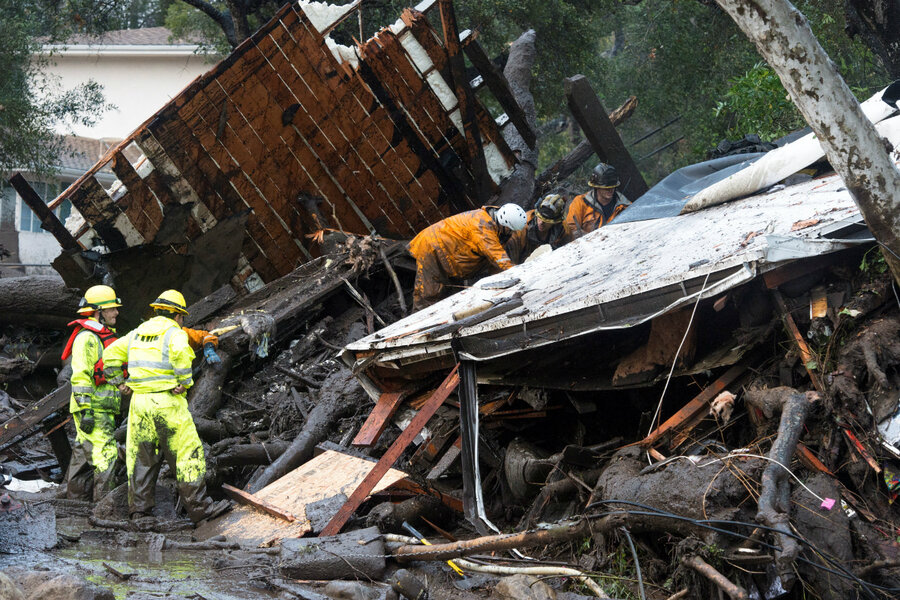A search for survivors continues after mudslides hit southern California
Loading...
| Los Angeles
The number of those killed by mudslides in California was expected to rise from at least 13 dead but rescue efforts would become easier on Wednesday after the powerful rain storm heads west and skies clear, authorities said.
Rescue personnel in Santa Barbara County early on Wednesday morning continued searching for victims where mudslides slammed into homes, covered highways and swept away vehicles early on Tuesday when more than a half-inch of rain fell in five minutes, a rate that far exceeds the normal flash flood threshold.
"While we hope it will not, we expect this number to increase as we continue to look for people who are missing and unaccounted for," Santa Barbara Sheriff Bill Brown of the death toll during a news conference on Tuesday.
The upscale communities of Montecito and Carpinteria, just outside the city of Santa Barbara, were hardest hit. Over the past month California's scenic coastline was ravaged by a series of intense wildfires that burned off vegetation.
On Tuesday, emergency workers using search dogs and helicopters to rescue dozens of people stranded in mud-coated rubble in the normally pristine area, sandwiched between the ocean and the sprawling Los Padres National Forest, about 110 miles north of Los Angeles.
A 14-year-old girl was found alive after firefighters using rescue dogs heard cries for help from what was left of her Montecito home, the Los Angeles Times reported.
"I thought I was dead there for a minute," the teenager Lauren Cantin, covered in mud, said after workers spent six hours rescuing her, NBC News reported.
About 300 people were stranded in a canyon. Local rescue crews, using borrowed helicopters from the US Coast Guard, worked to airlift them out, officials said.
Heavy downpours struck before dawn on Tuesday after 7,000 residents in Santa Barbara County were ordered to evacuate and another 23,000 were urged to do so voluntarily, some of them for a second time since December.
The county set up an evacuation shelter at Santa Barbara City College, where some people showed up drenched in mud, and also provided a place for people to take their animals.
But only 10 to 15 percent complied with mandatory orders, said Amber Anderson, a spokeswoman for the Santa Barbara County Fire Department.
The number of fatalities surpassed the death toll from a California mudslide on Jan. 10, 2005, when 10 people were killed as a hillside gave way in the town of La Conchita, less than 20 miles south of the latest disaster.
Last month's wildfires, the largest in California history, left the area vulnerable to mudslides. The fires burned away grass and shrubs that hold the soil in place and also baked a waxy layer into the earth that prevents water from sinking deeply into the ground.
Some local residents had to flee their homes due to the fires last month and again this week because of the rains.
This story was reported by Reuters.







